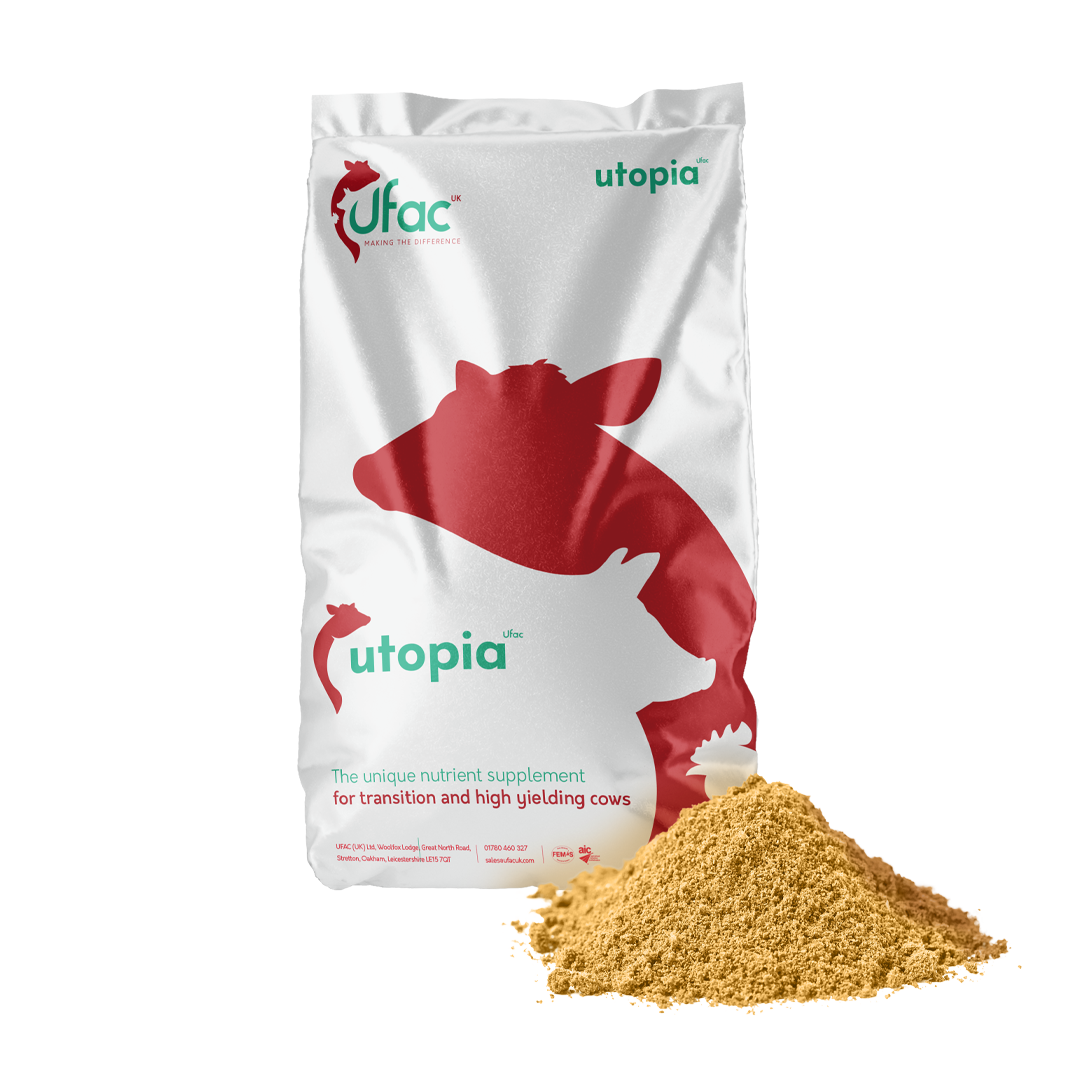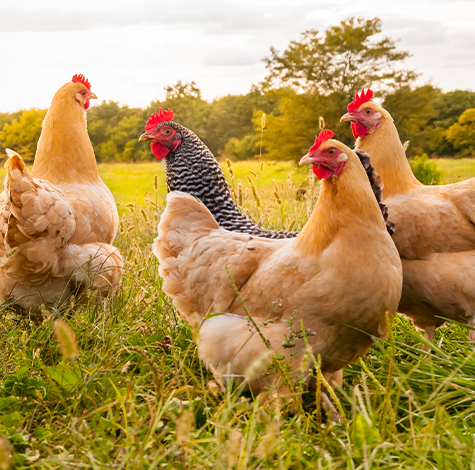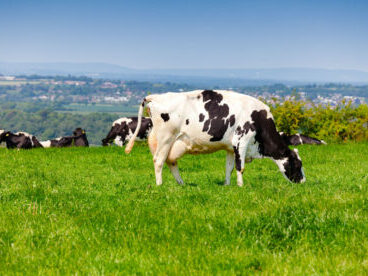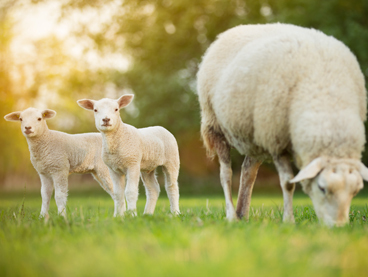Using a combination of UFAC products, Dairy farmers can support freshly calved cows during critical periods, ensuring maximum performance and promoting recovery after birth.
Whilst certain agricultural animals are known to breed during specific months, typically springtime, dairy cows have multiple reproductive cycles throughout the year.
The first 60 days before and after calving are the most critical periods in the reproduction cycle of a dairy cow and are the highest risk period for several diseases. A recent poll has shown that 78.7%* of UK dairy farmers found the majority of diseases experienced by their herd occurs in the first 60 days post-calving. These illnesses, such as retained fetal membranes (RFM), mastitis and ketosis, can negatively impact the cow’s overall health and performance.
Proper dairy cow management is critical, especially in the first 60 days post-calving, to prevent diseases that will impact productivity and overall health.
Transition and Fresh Cows
When talking about fresh cows, it is important to consider transitioning cows first. The term transitioning refers to the process of the cow not producing milk, calving and then producing milk. The transition period is typically 3 to 4 weeks pre and post calving.
Feeding particular supplements and vitamins to a transition cow to improve energy requirements is vital in ensuring fresh cows have adequate energy.

Minimising negative energy balance
High-yielding dairy cows typically enter a period of negative energy balance in early lactation. This is due to the milk yield potential increasing, while the ability to consume sufficient food to support this extra milk has not increased at a similar rate.
It is recommended that farmers pay close attention to milk records 4-6 weeks after calving. Farmers should be aiming for lactose levels above 4.55%. If they fall below this level, cows could be underperforming, and rations will therefore need to be rebalanced to raise overall energy levels.
It is also essential to manage dry matter intake to minimise negative energy balance in high-performing dairy cows. Fresh cows need diets that promote dry matter intake so the period of negative energy balance they experience after calving is as short as possible. Energy intake can be increased by providing a diet with high quality forages. The particle size of the feed should stimulate rumination, achieve rumen fill, and maintain optimum ruminal pH.
It is worth noting that performance in the first week of lactation determines the performance for the next 300 days. Therefore, setting the cow up efficiently in the dry period will help make a good transition at calving and immediately after. To ensure that the transition period goes smoothly, it is important to carry out fresh cow checks and spot potential problems early on.
Fresh cow checks
Pay attention to animals after calving
All cows should be provided with adequate food and water immediately after calving. It is then important to consider several factors, such as;
- Do they appear to be suffering from nerve damage?
- If it’s been a difficult calving, administer pain relief
- Look for signs of haemorrhaging
- Collect colostrum cleanly and as soon as possible
- Check udder for signs of mastitis
- Look for signs of milk fever
- Assess gut health
Identify the fresh cows in your herd
It is recommended that farmers keep a dedicated group of fresh cows for around 3-4 weeks post-calving so that a close eye can be kept on the fresh cows that are at risk.
Assess the cow’s behaviour post calving
It is important to keep an eye on the cow’s behaviour post-calving and ensure that she has a good rumen fill and a full udder. These observations will help farmers to pick up on potential issues early.
Test for ketosis
Some farms ensure that animals are taken aside, and temperatures and ketone tests are carried out on all animals 7 days post-calving. However, this can be time-consuming. Therefore, monitoring your fresh cows and testing any that seem to be showing abnormal behaviours is recommended. If the ketone tests indicate subclinical ketosis, cows should be treated and investigations carried out.
Check uterine health
Internal uterine checks should be carried out to check for signs of infection in fresh cows. For example, cows with retained fetal membranes (RFM) are at a higher risk of metritis.
Ensure high milk production and maximum performance
A freshly calved cow typically produces high levels of milk. However, to ensure maximum performance, it is essential to implement several feeding changes. The nutrient demands of a newly calved cow is approximately double that of a dry cow. It is important to supply plenty of energy and protein post-calving to maintain milk production and promote recovery after birth.
UFAC provides dairy farmers with a wide variety of feed supplements, proven to improve dairy cows’ overall production, health and fertility pre and post-calving.
UFAC products
Utopia
utopia is designed to give everything the animal needs to survive and thrive. utopia is a combination of dynalac and glycerene with added methionine and choline and should be fed to transition and fresh cows to help them settle into lactation. utopia provides essential fatty acids, amino acids and glycerene to the cow which is vital for minimising negative energy balance, as 70% of the animals energy comes from glucose.
glycerene
glycerene boosts rumen-inert energy supply to transition and fresh-calved cows, helping them settle into lactation and achieve high dry matter intake while minimising body condition loss. UFAC recommends feeding glycerene to transition and early lactation/freshly calved cows, 21 days pre calving to the first 50 days in milk. glycerene’s greater glucose supply improves total fatty acid absorption and provides glucogenic energy, helping to reduce body condition loss and increasing milk yield.
supa-cream
supa-cream is suited to all stages of lactation and is the ideal fat supplement to boost energy when cows are managed as a single milking group. supa-cream acts as a direct replacement for calcium soap with the added benefit of omega 3, which is vital for supporting reproductive efficiency and overall health in cows.
omega cream
Mortality in dairy calves has emerged as a major challenge in recent years. Calves are born immunologically immature and are highly susceptible to infectious diseases. omega cream is 70% C16 with long-chain omega 3 and glycerene to support with fertility and health in transition and fresh cows. Including these omega-3 fatty acids can help inflammatory conditions early in life and increase dairy herd productivity.
Having supplied the animal feed industry for over 45 years, we recommend contacting a member of our team today to find the perfect feed supplement for your freshly calved dairy cows.
Interested in learning more about UFAC products? Fill out the form below, and a member of our team will be in touch with more information, or contact our Regional Business Managers directly.
Mark Townsend
M: 07788 294 539
South West and Wales
Richard Lapthorne
M: 07788 963 487
North England and Scotland
James Hastings-Molyneux
M: 07538 763 832
South East and Midlands


 Back to News
Back to News 



